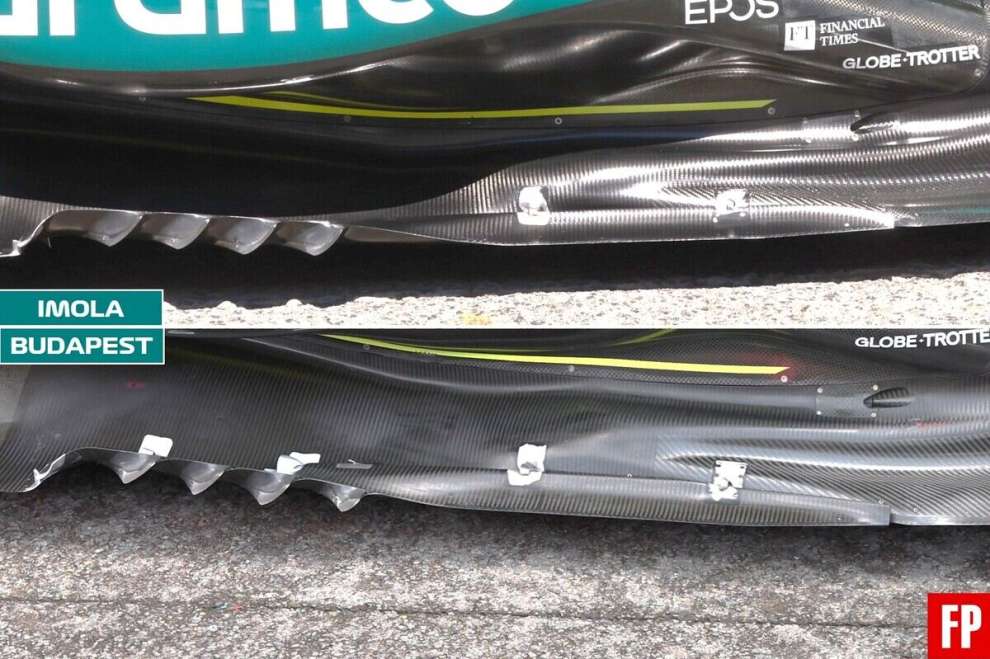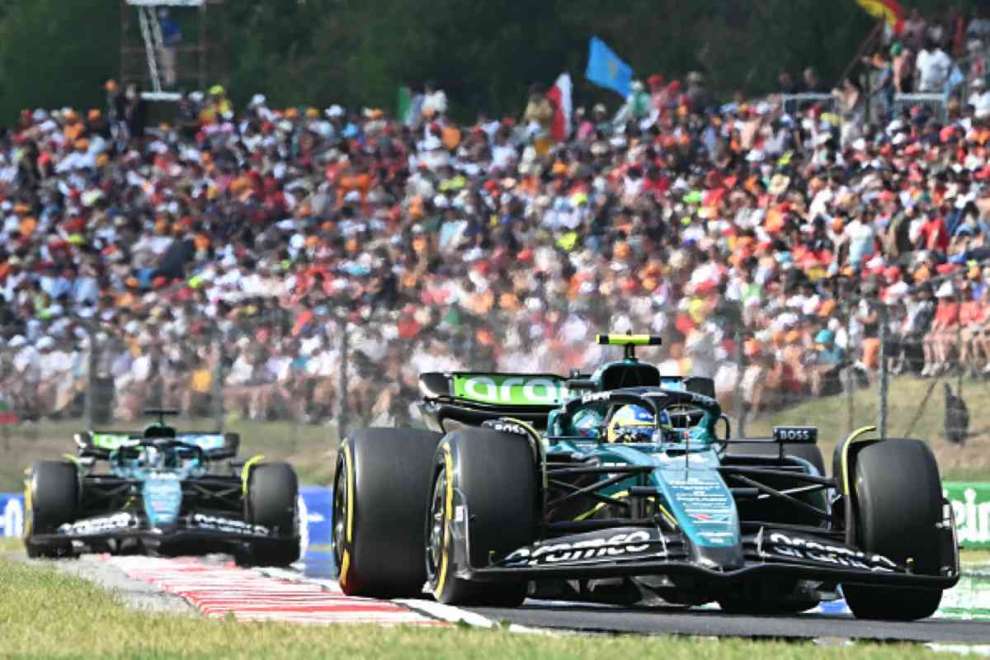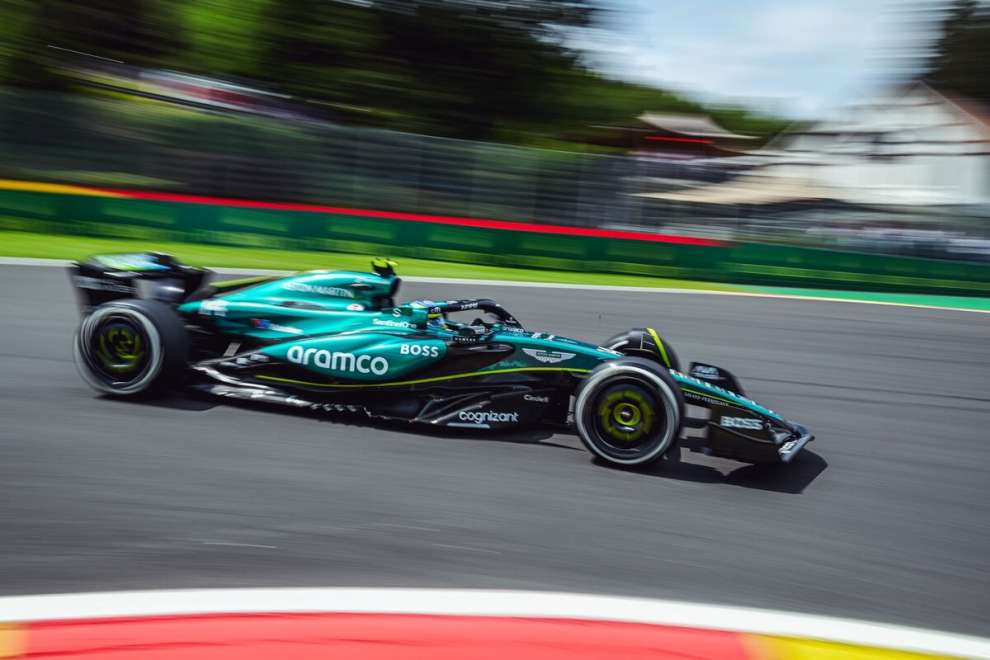By Carlo Platella
Aston Martin has had an up-and-down first part of the season. If in the first five races the average gap with respect to Red Bull is less than 6 tenths on a flying lap, in the dry qualifying sessions at Imola, Barcelona and Austria it rises above an average of one second. However, the team takes advantage of the difficulties to collect data and set up a new direction of developmentinaugurated by the package introduced in Budapest, a weekend in which the gap from Red Bull on Saturday returned to under 8 tenths. Even more than the stopwatch, however, it is the feedback from the drivers that instills confidence.
What’s new in Budapest
“We took the wrong direction of development and it didn’t go well, but we know how to get out of it”, Lance Stroll’s summary on the eve of the Silverstone weekend. Aston Martin starts the season strong, only to lose competitiveness with the updates introduced during the year, which by increasing the aerodynamic load deteriorate the driveability of the car. The problems explode with the Imola package, pushing the team to take a step back to get a clearer picture of the situation.
There is no shortage of setup experiments, including the one conducted by Alonso in Emilia-Romagna, who decided to start from the pit lane in order to experiment with the setup despite the parc fermé regime. The difficulties and experiments conducted are costly in terms of results, but allow for a better understanding of the problem and preparation of countermeasures. After having partially set aside the Imola package in the home race at Silverstone, the debut of the updates that inaugurate a new development course.

The changes are substantial, with news at the bottom, to the Venturi channel flow conveyors and to the rear diffuser. The most important changes are hidden under the car, while from the outside you can appreciate the re-profiling of the lower anti-intrusion cone fairing. Also noteworthy is a new high-load beam-wing and the renewal of the halo aerodynamics. Abandoned the flaps that also acted as vortex generators, a vertical bulkhead was preferred to laminate the flow towards the bonnet.

The objectives
The Hungarian package opens a new development path for Aston Martin, with the aim of increasing its downforce and aerodynamic efficiency without compromising stability and driveability. A practice that the Silverstone team has struggled with so far, in a generation of ground effect Formula 1 cars that are particularly sensitive to ride height, tire temperatures, ambient temperatures and other parameters. This extreme sensitivity is precisely the source of numerous difficulties for the English team when it comes to choosing how to extract performance from the car. To shave tenths off the stopwatch, in fact, it is more simply a matter of increasing the aerodynamic load, as each package brings with it collateral characteristics that require compromises in set-up and driving.
“We had problems adding downforce while keeping the same characteristics, a good balance and the way we run the car on different tracks and in different conditions,” the story of technical director Dan Fallows. “The most important thing is to identify the areas where, by working on them, you can get the most out of the car. If you think that will give you the biggest improvements on the lap, then that’s where you need to focus.” Fundamental to this process are the drivers’ input on their driving needs, translated into behavioral and balance characteristics to dictate the objectives for the updates. “We asked them what their priorities were.”, continues Fallows. “Sometimes it’s hard to define them if you have general balance issues. But with their help we think we have a good understanding of what they are.”

Promoted news
The Budapest package has a tangible impact on the AMR24, so much so that on Friday at Spa the team carries out further tests to adjust the mechanical set-up of the suspension, seeking the best combination of ride height and stiffness to extract the most from the aerodynamic innovations. The Hungarian track is not particularly favourable to Aston Martin, which continues to suffer on the long corners, while in Belgium the English cars suffer from a lack of speed on the straight. Regardless of the results, however, what counts are the positive sensations transmitted behind the wheel.
“The car responded well,” Fernando Alonso reports. “We are quite happy with how the new package worked in Hungary. It does what the wind tunnel predicted. We found a very good correlation, which was very important after some updates that were up and down. […] Now it seems that we have found a direction and what we see in the wind tunnel we also see on the track. Maybe now it is easier to increase the load without fearing not finding it on the circuit”.

“After the updates in Budapest we are more calm in terms of what is to come in the future. Maybe now the team has a better understanding of where to extract performance with the confidence that it will improve the lap time. […] It was a key package for us and it worked as expected. It definitely gave us confidence.” The hope now at Aston Martin is to be able to improve performance continuously, without being caught off guard by the side effects of the updates. The ambition is to get closer to the leading quartet of Red Bull, McLaren, Ferrari and Mercedes, with the aim of also gaining further credibility in the eyes of the market dreams of Adrian Newey and Max Verstappen.
#Aston #Martin #crisis #upgrades #promoted #hunt #top